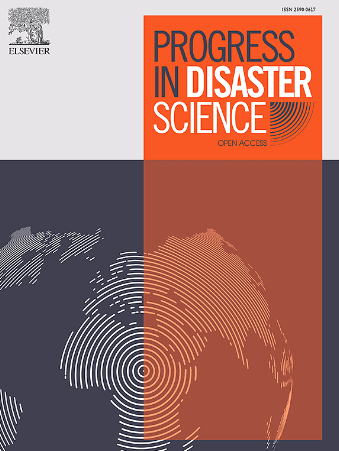评估旨在减轻尼泊尔与泥沙有关事件影响的基于生态系统的减少灾害风险措施的长期有效性和社会经济效益
IF 3.8
Q3 ENVIRONMENTAL SCIENCES
引用次数: 0
摘要
基于生态系统的灾害风险降低(Eco-DRR)方法被广泛用于边坡稳定和侵蚀控制,但其长期有效性、结构完整性和社会经济效益仍未得到充分认识。本研究定性地评估了作为日本国际协力机构(JICA)技术合作项目的一部分,在尼泊尔的三个地点实施的地质灾害对策,使用当地可用的材料(填石铁丝网和植被)。基于照片的比较显示,在过去的退化地区,植被覆盖在20至30年间有所增加。格宾挡土坝稳定了沟壑并截留了沉积物,但由于金属丝腐蚀和断裂而恶化。2024年9月26日至28日的暴雨引发了Nallu Khola的泥石流,进一步暴露了这些结构在极端事件下的脆弱性,强调了对更具弹性设计的需求。以植被为基础的对策通过提供用于围栏、牲畜饲料和家庭材料的竹子来提供生计效益。然而,经济发展使居民转向以市场为基础的生计,减少了他们对这些资源的依赖。jica设立的用户小组的持续活动突出了社区长期参与土地和森林管理的潜力。虽然定性数据提供了初步的见解,但需要定量评估来精确和标准化地评估对策的有效性。本文章由计算机程序翻译,如有差异,请以英文原文为准。
Assessing the long-term effectiveness and socioeconomic benefits associated with ecosystem-based disaster risk reduction measures aimed at mitigating the impact of sediment-related events in Nepal
The Ecosystem-based Disaster Risk Reduction (Eco-DRR) approach is widely used for slope stabilization and erosion control, yet its long-term effectiveness, structural integrity, and socioeconomic benefits remain insufficiently understood. This study qualitatively assesses countermeasures to geohazards that were implemented at three sites in Nepal as part of the Japan International Cooperation Agency's (JICA's) technical cooperation projects, using locally available materials (rock-filled wire gabions and vegetation). Photo-based comparisons revealed an increase in vegetation cover over 20 to 30 years in previously degraded areas. Gabion check dams stabilized gullies and trapped sediment, but experienced deterioration due to wire corrosion and breakage. A debris flow at Nallu Khola triggered by torrential rainfall on 26–28 September 2024 further exposed the vulnerability of these structures to extreme events, emphasizing the need for more resilient designs. Vegetation-based countermeasures provided livelihood benefits by supplying bamboo for fencing, livestock feed, and household materials. However, economic development has shifted residents toward market-based livelihoods, reducing their reliance on these resources. The sustained activities of the JICA-established user groups highlight the potential for long-term community engagement in land and forest management. While qualitative data offer initial insights, quantitative assessments are needed for precise and standardized evaluations of the countermeasures' effectiveness.
求助全文
通过发布文献求助,成功后即可免费获取论文全文。
去求助
来源期刊

Progress in Disaster Science
Social Sciences-Safety Research
CiteScore
14.60
自引率
3.20%
发文量
51
审稿时长
12 weeks
期刊介绍:
Progress in Disaster Science is a Gold Open Access journal focusing on integrating research and policy in disaster research, and publishes original research papers and invited viewpoint articles on disaster risk reduction; response; emergency management and recovery.
A key part of the Journal's Publication output will see key experts invited to assess and comment on the current trends in disaster research, as well as highlight key papers.
 求助内容:
求助内容: 应助结果提醒方式:
应助结果提醒方式:


